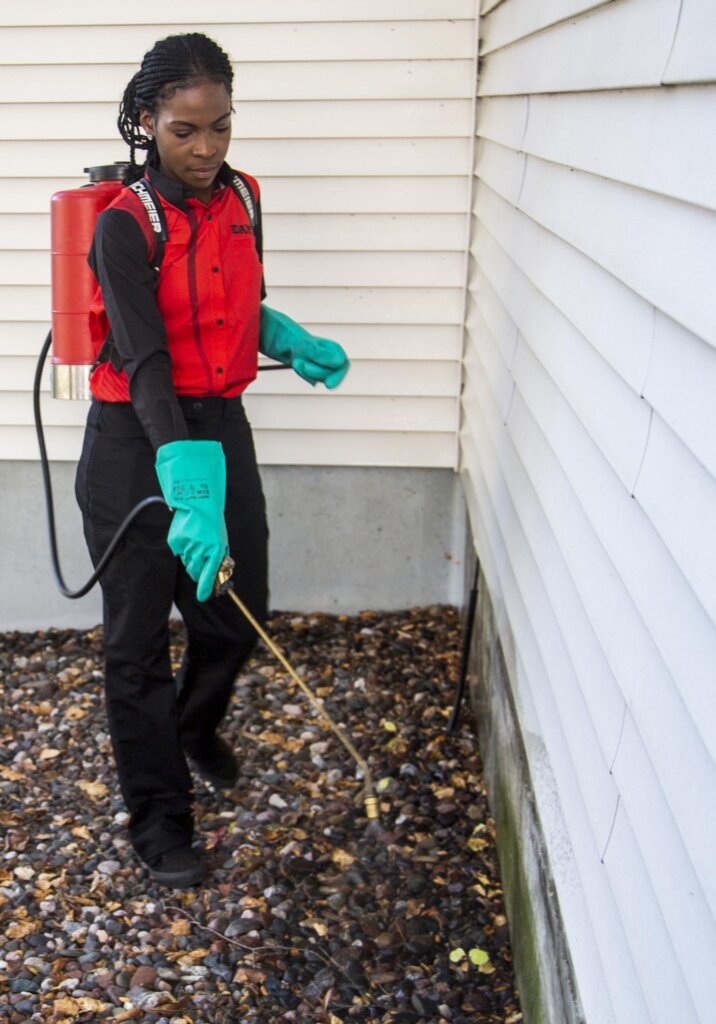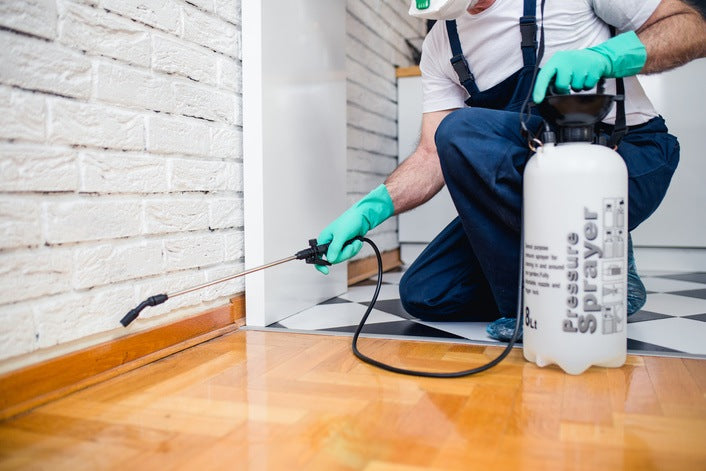Checking Out Infestation and Treatment Strategies in the Globe of Pest Control
The landscape of parasite control encompasses a myriad of obstacles, particularly as problems of common family pests continue to advance. Understanding the actions and reproductive patterns of these nuisances is vital for developing efficient therapy strategies. By integrating safety nets with sophisticated monitoring techniques, such as Integrated Insect Monitoring (IPM), homeowners can better secure their environments. However, the effectiveness of these techniques might differ considerably based upon certain scenarios. What underlying variables add to the success or failing of these strategies in different settings?

Common House Vermin
When it concerns managing our space, comprehending common house bugs is crucial. These parasites not just disrupt our convenience but can additionally present health threats and damage residential or commercial property. One of the most common household bugs include ants, roaches, rodents, termites, and bed insects.
Ants, typically seen foraging in cooking areas, can pollute food and develop large nests. Rats, including mice and rats, can create structural damages and lug illness like hantavirus and salmonella.
Identifying the indicators of these insects, such as droppings, nests, or attack marks, is necessary for early treatment (Pest Control Lockhart). Correct sanitation methods, sealing entrance points, and preserving a clutter-free atmosphere are efficient preventative actions. By recognizing these usual household pests and understanding their behaviors, property owners can take positive steps to reduce invasions, making sure a healthier living atmosphere
Understanding Insect Infestations
Insect infestations can escalate quickly, transforming a small nuisance into a considerable problem if not addressed promptly. Recognizing the nature of these problems is vital for efficient management. Pests can attack property and industrial spaces for numerous reasons, including the look for food, shelter, or breeding premises. Typical elements adding to invasions include inadequate cleanliness, structural susceptabilities, and seasonal modifications that drive pests inside your home.
Determining the type of insect is vital, as different species exhibit varied actions and reproductive prices. For circumstances, rats might develop nests in surprise locations while bugs like cockroaches thrive in damp settings. Early discovery commonly depends upon recognizing signs such as droppings, munch marks, or uncommon noises, which can indicate a trouble prior to it ends up being severe.
Ecological problems likewise play a vital duty in bug expansion. Warm, damp climates can help with the rapid growth of insect populaces, while adjustments in landscaping or construction can accidentally produce conducive atmospheres. For that reason, normal inspections and preventative actions are critical to mitigating the danger of infestations. An informed strategy to understanding these characteristics lays the groundwork for efficient pest administration strategies in the future.
Therapy Methods and Methods
Efficient therapy methods and techniques more tips here are necessary for minimizing pest infestations and bring back a risk-free setting. A complex approach is typically best, integrating chemical, organic, and mechanical approaches tailored to the specific insect and the seriousness of the invasion.
Chemical therapies consist of the usage of pesticides and herbicides, which can successfully remove parasites. Nonetheless, correct application and adherence to safety and security guidelines are crucial to reduce dangers to people and non-target organisms. Integrated Pest Monitoring (IPM) urges the wise use chemicals as a last hope, depending instead on monitoring and threshold degrees to establish treatment requirements.
Biological control approaches include introducing all-natural killers or parasites to lower insect populations. This strategy is progressively popular, especially in agricultural setups, as it promotes ecological sustainability.
Mechanical methods, such as catches and obstacles, offer prompt alleviation from insects without presenting chemicals. Choices consist of sticky catches for insects or physical obstacles for rodents.
Inevitably, the option of therapy technique should take into consideration the particular pest, the atmosphere, and possible effect on human wellness and environments. A balanced mix of these methods can effectively handle infestations while advertising long-term bug control remedies.
Safety Nets for Homes
Proactively addressing bug concerns prior to they escalate is crucial for keeping a healthy home environment (Pest Control Lockhart). Carrying out effective precautionary procedures can dramatically reduce the possibility of problems, inevitably safeguarding both your building and well-being

Proper landscaping also plays an essential function in prevention. Keeping shrubs and trees cut away from the residence minimizes the possibilities of insects finding their means inside your home. Additionally, ensure that water drainage systems are operating successfully to stop standing water, which can draw in mosquitoes and various other pests.
Finally, routine examinations are a good idea. On a regular basis inspecting for signs of parasite activity enables very early intervention. By taking on these safety nets, homeowners can develop an atmosphere that is much less welcoming to pests, therefore improving their total lifestyle and decreasing the demand for comprehensive parasite control interventions.
Commercial Bug Control Strategies
A thorough method to business insect control is crucial for companies intending to maintain a secure and hygienic atmosphere. Reliable techniques include a mix of routine examinations, employee training, and the application of Integrated Parasite Management (IPM) methods.
Normal evaluations allow very early detection of insect task, permitting for timely intervention. Services should develop a regular timetable for these analyses, focusing on risky locations such as cooking areas, storage spaces, and garbage disposal websites. Staff member training is equally important; personnel needs to be educated on the indications of bug problems and the importance of reporting them right away.
Carrying out IPM techniques aids mitigate pest problems sustainably. This consists of habitat alteration, such as sealing access points and decreasing mess, in addition to Check This Out using natural deterrents prior to turning to chemical therapies.

Additionally, teaming up with an accredited pest control copyright makes certain accessibility to expert expertise and advanced therapy choices. This partnership can lead to tailored bug control prepares the original source customized to the certain demands of business, decreasing threats and boosting total effectiveness. Eventually, a proactive and informed strategy cultivates a pest-free atmosphere, protecting both public health and organization online reputation.
Verdict
In final thought, effective bug control demands an extensive understanding of usual household bugs and their behaviors, combined with targeted therapy methods. Carrying out preventive procedures along with treatment approaches such as Integrated Insect Administration and organic control enhances the capacity to mitigate invasions.